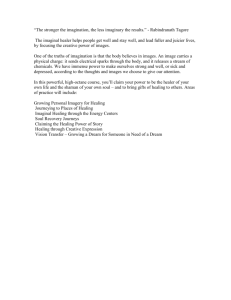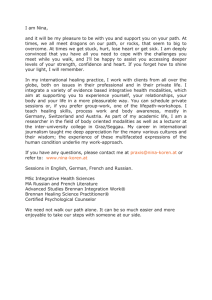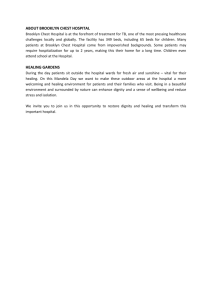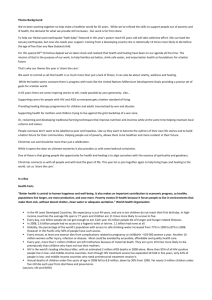10 Guiding Principles for Patient-Centered Care
advertisement
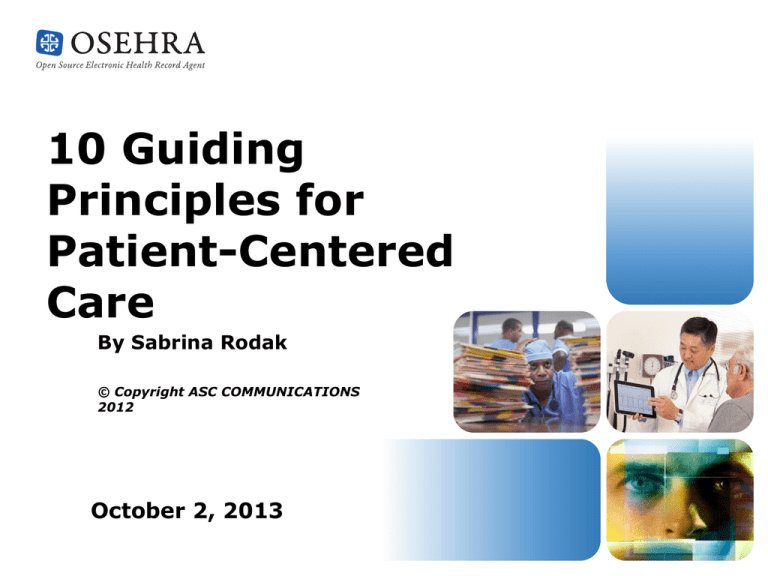
10 Guiding Principles for Patient-Centered Care By Sabrina Rodak © Copyright ASC COMMUNICATIONS 2012 October 2, 2013 All team members are considered caregivers • Everyone in the workforce, from housekeeping staff to the CEO, is part of patients' care experience • Each person is expected to put the patient first Care is based on continuous healing relationships • Focus on the continuum of care for patients rather than episodes of care. • We're here to not only provide care, but also to provide healing — a more personal level of healthcare Care is customized • Reflects patient needs, values and choices • Recognizes that each patient is different and may have different needs and preferences • It allows the patient's individuality to be a component of care Knowledge and information are freely shared… • …between and among patients, care partners, physicians and other caregivers • All members of the care team — including the patient — need to be aware of the patient's status and care plan • If the patient is going to be the center of care, [he or she] absolutely needs to be informed and part of the decision-making. Care is provided in a healing environment • Comfort, peace and support are essential, including” • • • • • music healing gardens soothing color schemes pet therapy programs pleasing scents, such as lavender or the smell of baked cookies Families and friends are part of the care team • Family and friends are essential supports for the patient's healing process • Not only emotionally, but also physically, as they can help patients understand physicians' instructions Patient safety is a visible priority • Making patient safety a visible priority demonstrates the organization's commitment to patient care • For example, a campaign around employee immunization and hand hygiene Transparency is the rule in the care of the patient • Providers should be upfront and honest with information so [patients] can make informed decisions with us • One way MSHA supports transparency is by posting its quality and safety performance on its website All caregivers cooperate with one another • Common focus on the best interests and personal goals of the patient. • All processes, even those that don't involve patients, should be performed from a "patientvalue" perspective The patient is the source of control for their care • A core tenet of patientcentered care • Making patients the source of control of their care is the result of effective deployment of all other guiding principles Additional Ways to Empower Patients • Participation in a patient advisory group – 6 to 12 patients who provide input on specific care models, such as diabetes programs – Soliciting suggestions from those on the receiving end of healthcare gives patients some control over future healthcare services and helps continue to put patients first in their decisions • Embedding principles in everyday work – – system leaders explicitly connect policies to one or more of these patient-centered care principles Social media policy to optimize communication and social presence through the official use of social media Comments Questions? http://www.beckershospitalreview.com/quality/10-guiding-principles-forpatient-centered-care.html


